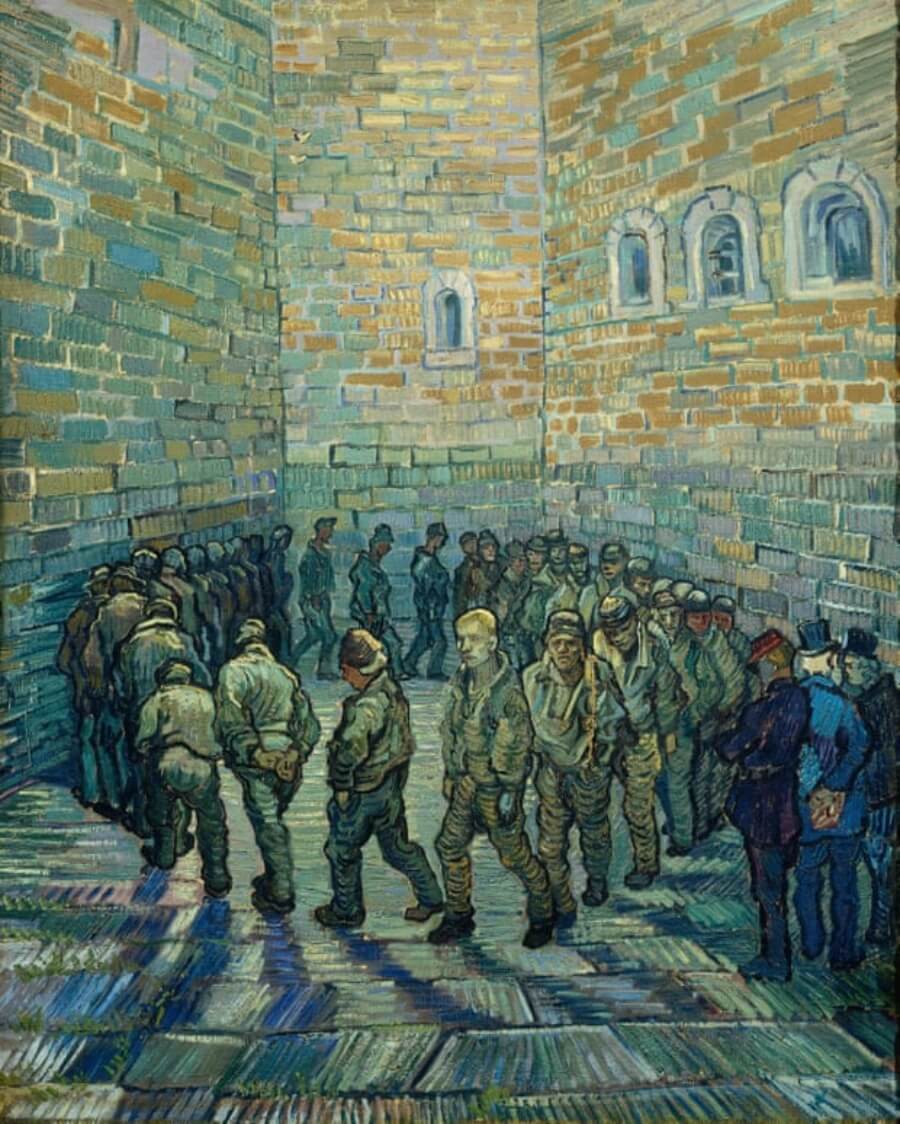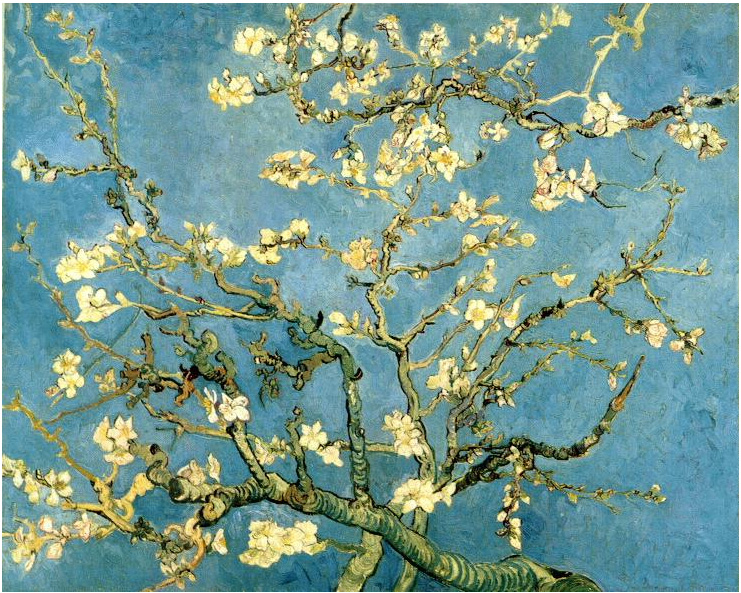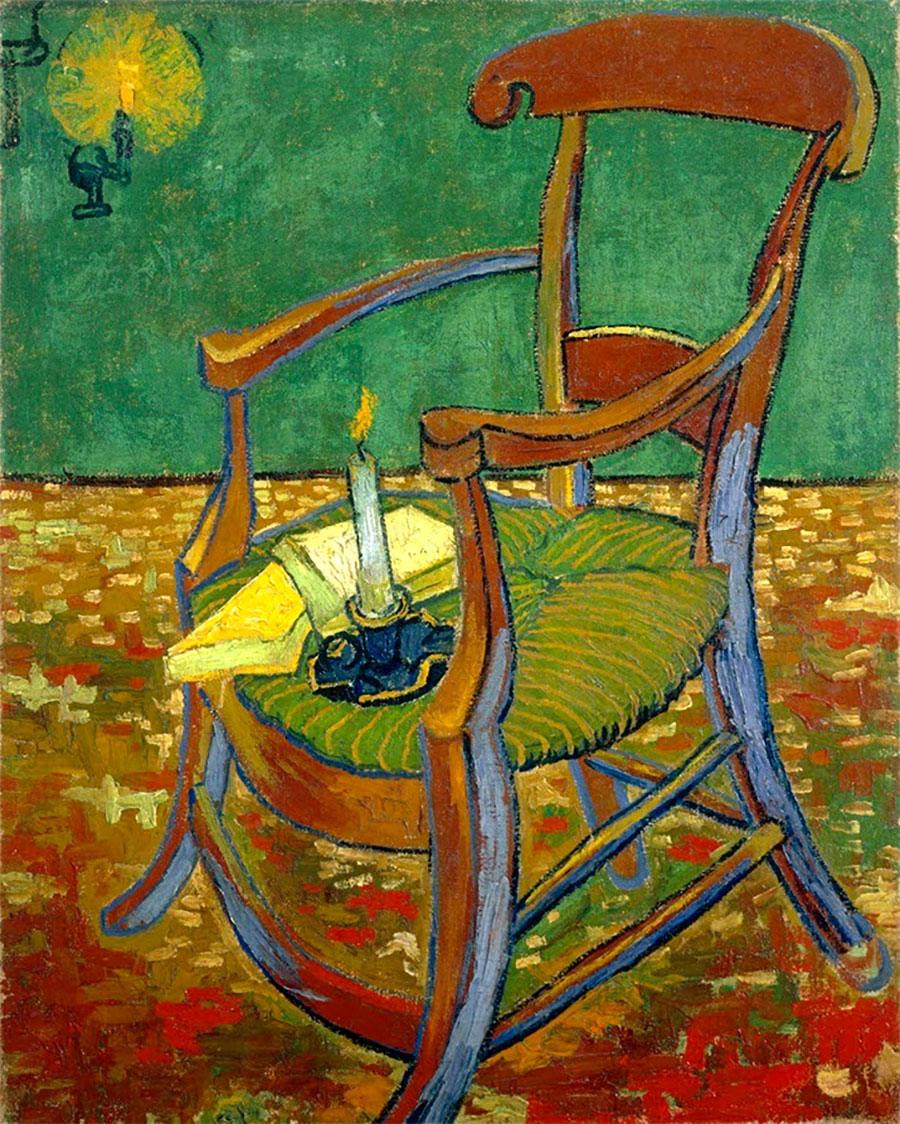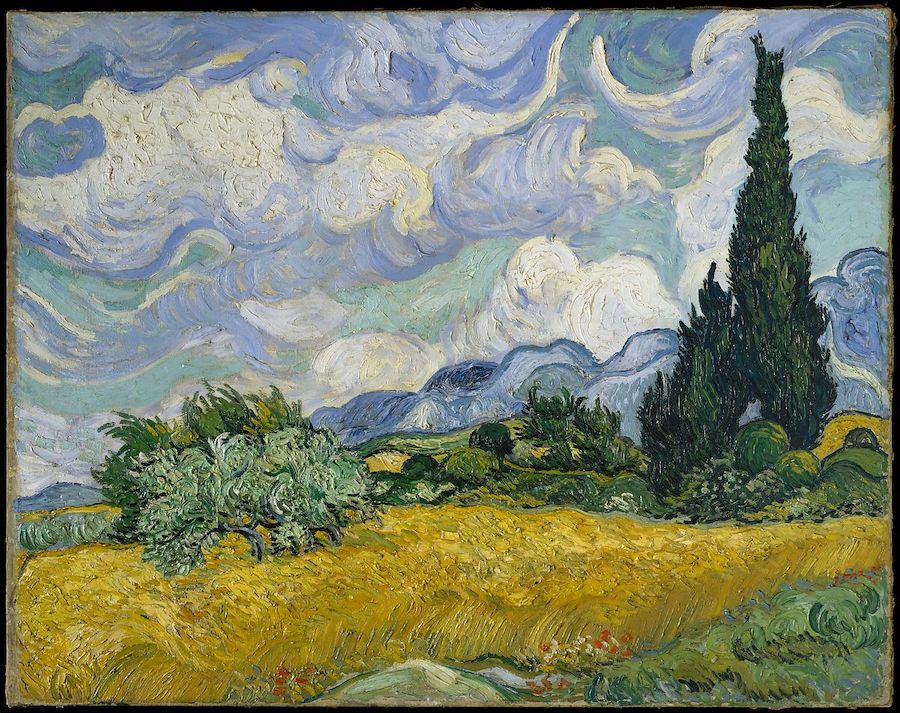London's Tate Modern is currently hosting a visit from a very different Van Gogh. The exhibition comes courtesy of the Pushkin Museum in Moscow and includes a painting that seemingly brings with it the air of a Soviet billboard, a kind of propaganda, a punishment, a coldness. It is a far cry from Van Gogh's most iconic sun-soaked canvasses - no lilies, no sunflowers in vases, no wheatfields.
|
Colaborating author: Marina Valcárcel
|
 |
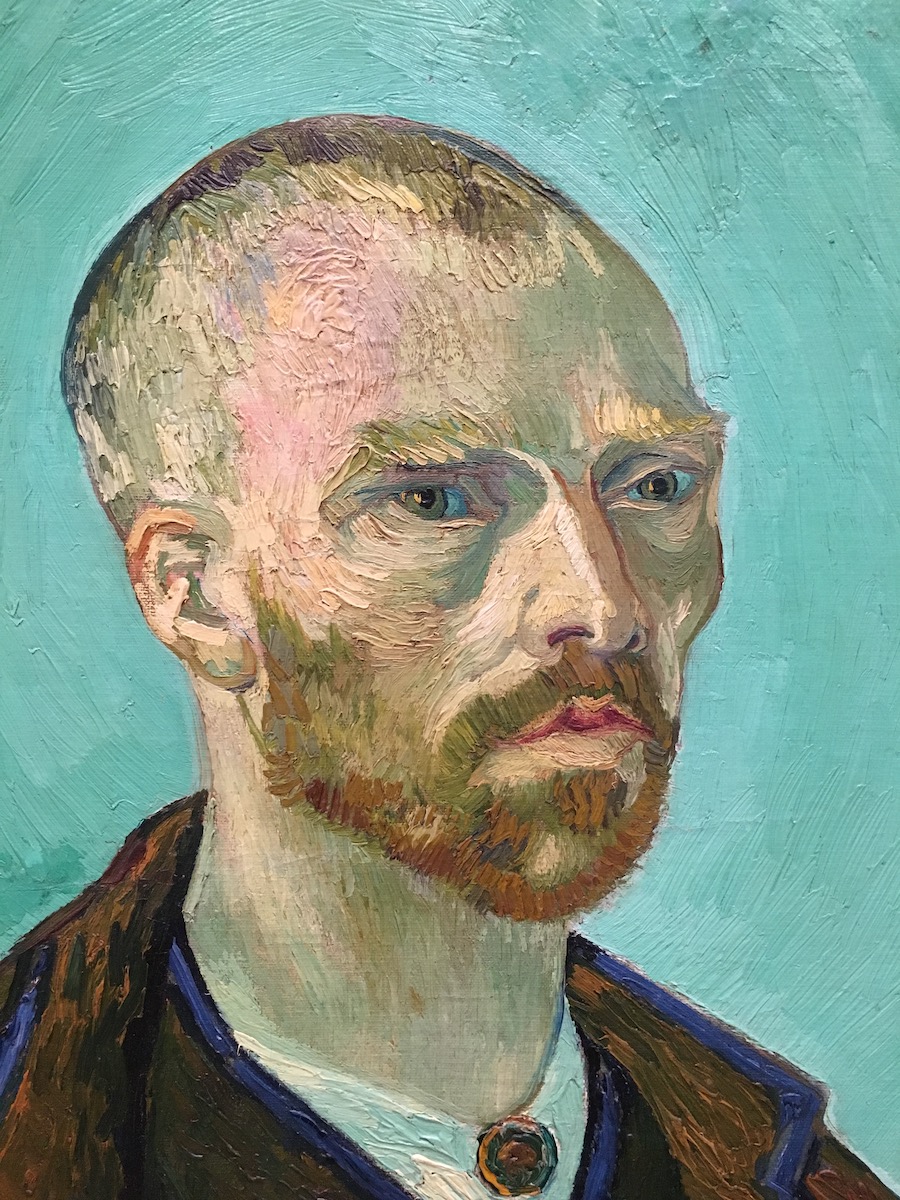
Vincent Van Gogh, Self-portrait dedicated to Gaugin (1888), Fogg Art Museum, USA
London's Tate Modern is currently hosting a visit from a very different Van Gogh. The exhibition comes courtesy of the Pushkin Museum in Moscow and includes a painting that seemingly brings with it the air of a Soviet billboard, a kind of propaganda, a punishment, a coldness. It is a far cry from Van Gogh's most iconic sun-soaked canvasses - no lilies, no sunflowers in vases, no wheatfields. This is his most tragic painting and features a prison courtyard. Painted in February 1890, by which time Van Gogh was an inpatient at St Rémy asylum, rarely venturing outdoors to paint the countryside around him, instead feverishly reproducing the postcards his brother Theo sent him. This painting, based on an engraving by Gustave Doré, is a scream in the dark. It is his terror of madness and confinement. A group of 33 prisoners, heads down, drag their feet around a circle of oppressive and alienating exercise, enclosed inside a wall without end, two symbolic butterflies hiding between its bricks. A feeling of the absence of freedom permeates it. Only a small ray of light trickles down from an unseen sky to illuminate the face of one of the prisoners, the only one to lift his head and look at us. A blond-haired man, white-skinned. Vincent Van Gogh. On 27 July 1890, five months after completing this painting, he would go out into the wheatfields surrounding Auvers with a revolver and shoot a bullet into his stomach.
Vincent Van Gogh, Prison Courtyard (1890), Pushkin Museum, Moscow
A meditation on painting
Van Gogh died at the age of 37. Other visionaries who revolutionized the art of their time also died young - Basquiat at the age of 27, Egon Schiele 28, Modigliani 35, Raphael 36, Caravaggio 38 ...
Unlike them, however, Van Gogh's biography (1853–1890) stands out for something unusual - the bulk of his output came in the last two years of his life. Just over 700 days and 900 works that would blow the roof off Western painting. Two years in and out of hospital, devouring oil paint of the colour that obsessed him - yellow lead chromate. Making the most of any periods of calm for frantic painting, sometimes a picture a day, sometimes two, and battling the dazed stupor produced by the potassium bromide injected into his veins to prevent seizures. Painting so as not to go mad, painting every lily and every ear of wheat until his senses absorbed them, painting the sun and the moonlight, painting so as not to die, painting whilst dying.
In addition to his paintings, the Dutchman also left a key legacy - his correspondence, which has survived essentially intact to the present day. From August 1872 until his death, Van Gogh wrote over 800 letters, of which 668 were sent to Theo his younger brother, his confidant, accomplice, double. All of them begin "My dear Theo" and are written in Dutch, English or French.
This spring of 2019, all roads lead to Van Gogh: the Tate Modern has inaugurated its first exhibition dedicated to him since 1947 - Van Gogh in Britain - whilst the Van Gogh Museum in Amsterdam is delighting visitors with a beautiful exhibition in which his landscapes dialogue with those of David Hockney. In Barcelona, there are long queues for the interactive Meet Van Gogh exhibition and Julian Schnabel's biopic - At Eternity's Gate - is still showing in cinemas.
Vincent Van Gogh, Almond Blossoms (1890), Van Gogh Museum, Amsterdam, Holland
Long before Vincent picked a brush with the intention of learning to be a painter, he was already looking at the world through the eyes of an artist. As a child, he became practised at observing Nature during his long walks in the Brabant countryside: he examined birds' nests and wondered at the Dutch flatlands broken up only by the sharp spire of some church or by the red strip of sunset on the skyline.
Through his father, a Calvinist pastor from the Dutch town of Zundert, he was immersed in a traditional learning method then prevalent in northern Europe, namely, that everything we observe is full of metaphorical and symbolic meanings. Much of this teaching to children was done through the holy prints that surrounded them in their homes. In his father's studio hung three engravings that impacted Vincent as a child: The Return of the Prodigal Son, The Harvest and a baby in his cradle by Rembrandt; simple scenes that lit the flame of a profound religious sensitivity in Van Gogh from a very early age.
The search for salvation
Behind those blue eyes, Vincent's life revolved around the inner workings of his own mind. Long before art made its appearance, there was not only the need to seek his salvation but also a voracious amount of reading - the Bible first and foremost, along with Shakespeare, Dickens, Hugo, Homer and Balzac, to name but a few. Between the ages of 16 and 30, he and his brother Theo worked as assistants at the Goupil Art Gallery and travelled throughout Holland, London and Paris. It was in these cities that Van Gogh immersed himself in museums and galleries, deciphering the works of the painters he most admired: Rubens, Frans Hals, Delacroix and, of course, Rembrandt. In Paris, he encountered the Impressionists, Japanese prints with their bright colors and lack of perspective or shadow and the dotted brushstrokes of the Pointillists. And everything learnt from museums and books served to expand the treasure trove of images and memories he would carry with him like baggage.
At 30 and in less than a decade, this fragile and confused young man decides to learn to paint, assimilating all contemporary innovation and emerging as the pioneer of the most modern, expressive forms of painting. And so, in February 1888, Vincent boards the train to Arles where his painting would reach maturity while his life begins to fall apart. Living in the Yellow House and obsessed with Gaugin's arrival, he churns out, at the rate of sometimes six canvasses a day, his legendary paintings: the Sunflowers series, A Pair of Boots, Gaugin's Chair, his Bedroom in Arles ... the same room where he would soon be found dying. In Van Gogh As Prometheus, Georges Bataille asserts that it is precisely on the night in December 1888 that he handed over his severed ear at a brothel "... [w]hen his painting turns into lightning, explosion and flame; while at the same time he himself disintegrated in ecstasy before a beam of radiant light, exploding, on fire."
Vincent Van Gogh, Gaugin's Chair (1888). Van Gogh Museum, Amsterdam, Holland
Dawn of the collapsible paint tube
In Provence, he embraced the landscape, turning its abundant indigenous bamboo and reeds into brushes and pencils. He was also able to benefit from advances in the chemical industry as new colours appeared in the form of coal tar pigments, mauve and magenta aniline dyes and synthetic lacquer tints. But, more importantly, came the invention of the squeezable paint tube, which made painting with oil outdoors possible for the first time.
When he took his easel out into the countryside, he would turn his head like sunflowers in search of sunlight and colours, sensing nature in all its glory: temperatures, sounds, mistrals, scents ... and then falling into a state of hypnosis. The last snows had just washed the fruit trees in the orchards clean. There were paths and yet more paths lined with trees of all kinds and everything was starting to shine with an intensity that Vincent painted in short, stenographic lines. It was then that he discovered the motivation for his painting: in nature he found the power of suggestion in the colours he used to convey poetic ideas and to express feelings or moods. In his film, Julian Schnabel enables us to experience Van Gogh's catharsis through optical illusions. He recounts how one day, in a second-hand shop, he came across a pair of bifocal glasses. While wearing them, he realized that his field of vision was altered, blurred or expanded and believed he had hit upon how to convey on screen the artist's trancelike way of seeing the world.
Vincent Van Gogh, A Wheatfield with Cypresses (1889). Metropolitan Museum, New York, USA
In Amsterdam recently, Hockney spoke with devotion: "I think my debt to Van Gogh is obvious here. For me, he's a contemporary artist. He still speaks to me today, like Brueghel." Van Gogh and Hockney lived a century apart but their landscapes, on display side by side, are like stars colliding: "Although it's obvious we both have a fascination with nature, what links me most to Van Gogh is not his colours, brushstrokes or landscapes, it's the clarity of his spaces." Insisting on their similarity of brushstroke, he replied with a smile: "Well, sometimes I steal things from Van Gogh. Great artists don't borrow, they steal." He added, seriously: "With a photograph, the whole surface is uniformly flat. Between a photo taken of a Van Gogh painting and the actual canvas, the difference is the brushstrokes. We can't look at a photo for long, no more than a fraction of a second, because we don't see the subject in layers. The portrait Lucian Freud painted of me required me to pose for 120 hours and that can all be seen in the layers of the painting. That's why it's of infinitely higher interest than a photo."
The London exhibition, the one in Amsterdam and Schnabel's film converge miraculously in one standout picture currently at the Tate Modern. It is At Eternity's Gate, the selfsame title as Schnabel's film. Along with The Prison Courtyard, Van Gogh painted it in April 1890 during his days of isolation at the Saint-Paul-de-Mausole asylum and this time it is based on a drawing of his from the Dutch period. It depicts a man sitting in a chair with his head buried in his hands. A symbol of despair and, more likely, of Van Gogh's own anguish. Two weeks before starting it, his doctor, Théophile Peyron, wrote to Theo: "He usually sits with his head in his hands and whenever someone comes to talk to him, it seems as if it causes him immense pain."
Conversely, for Hockney, At Eternity's Gate signifies a rebirth. In March 2013, one of his assistants, Dominique Elliot, committed suicide at the artist's house while he was painting the Yorkshire landscapes that are currently on display in Amsterdam. For several months, Hockney was unable to paint. In July of that same year, Hockney sent a drawing to his friend and curator Edith Devaney. It was a portrait of his friend Jean-Pierre Goncalves de Lima, sitting in his studio with his head in his hands. Devaney instantly spotted the similarities with Van Gogh's painting. Hockney acknowledged that this was not only a portrait of his friend but was also a kind of self-portrait in the face of tragedy. After that portrait came many more, which, in 2016, would become an exhibition at the Royal Academy: 82 Portraits and 1 Still Life. Van Gogh had persuaded Hockney to take up painting again.
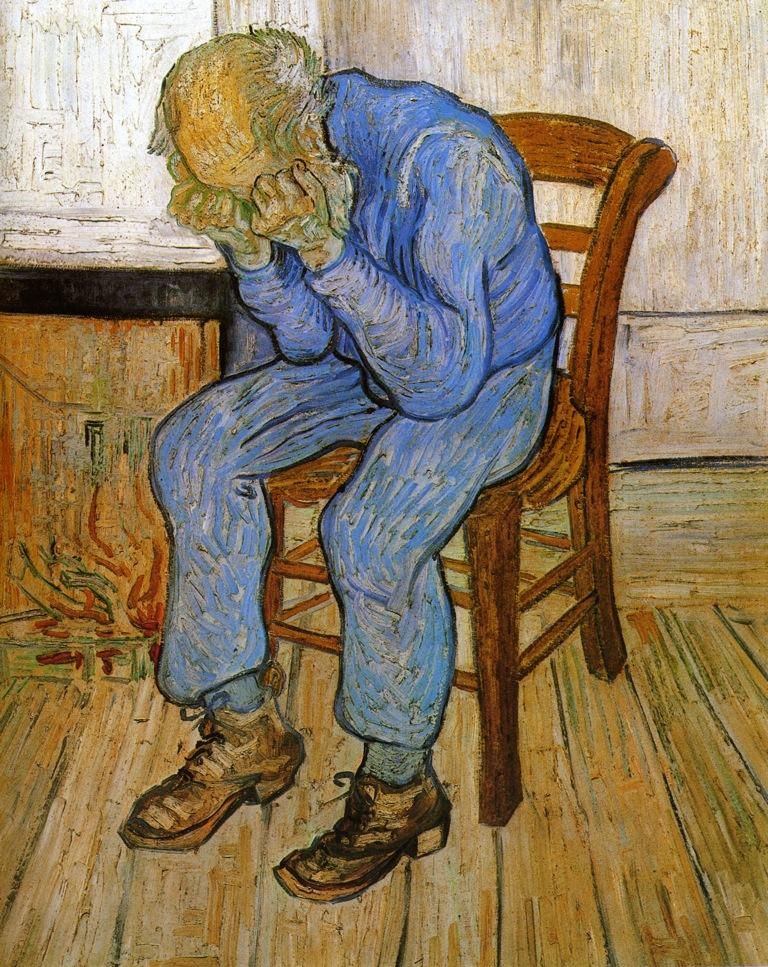
Vincent Van Gogh, At Eternity’s Gate (1889). Kröller-Müller Museum, Otterlo, Holland
Silent contemplation
In 1890, during his confinement, Van Gogh found himself even more deeply affected by everything than before. He breathed every breath behind the bars and felt his spirit vibrate behind the window panes, letting it merge with the changing landscapes, light and seasons through his brushes. In the monastery's walled garden, he became a silent contemplator. Sitting under the trees, his eyes captured everything he saw. He would lie next to the lilies, face to face, and paint them, as if one of them, at one with them. When we look at his paintings today, we can almost feel the air, the freshness under the shade, the grass and lavender moving. Vincent wrote at the time that he was in his heaven.
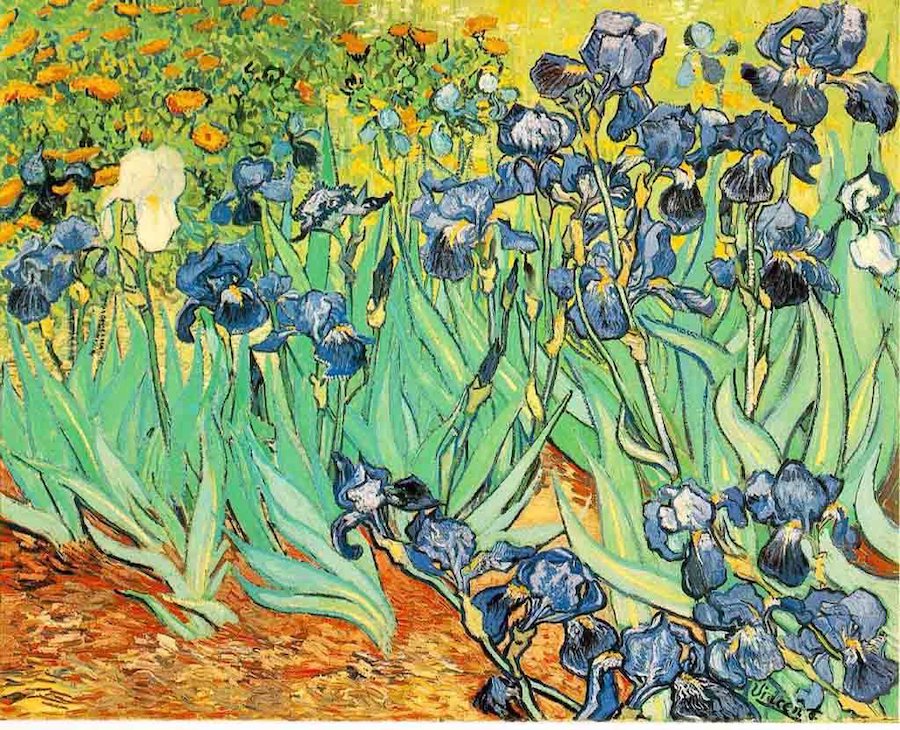
Vincent Van Gogh, Irises (1889). J.Paul Getty Museum, California, USA
However, towards the end of his life, the struggle inside his head between art and madness took on heroic proportions. The recurrence of crises was terrifying. In moments of calm, he painted furiously as if trying to ward off the next attack that would inevitably come the following day. For Van Gogh at this time, painting was both his destruction and at the same time his salvation, because it was precisely between episodes that he could see with greater intensity and lucidity and when his pictorial faculties seemed to be totally under control. These were works of wild abandon, painted on the edge of the abyss. Over and again, he painted barley-sugar cypresses like Solomon's columns, wheatfields with never-ending paths, starry night skies speckled as if by glistening gas lamps, cloud chains moving like ship sails tossed by the wind.
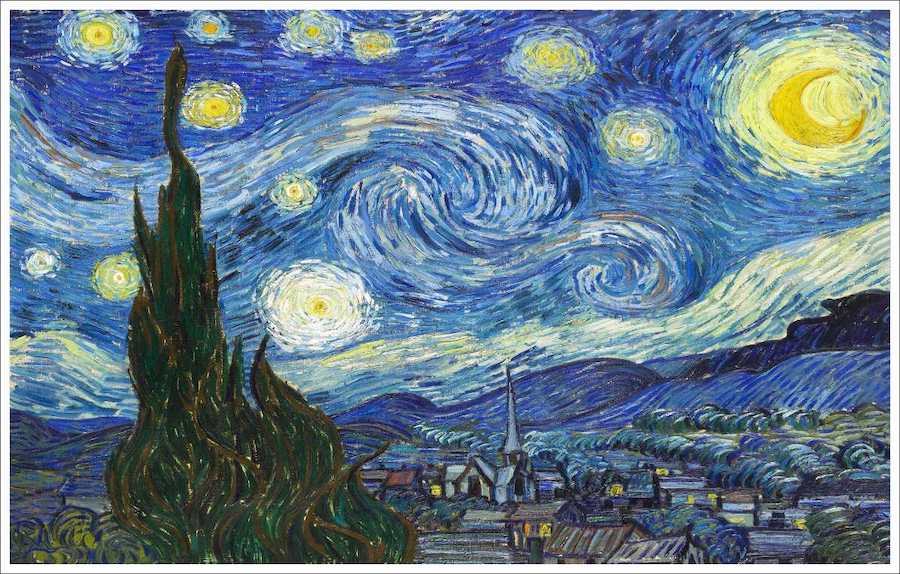
Vincent Van Gogh, Starry Night (1889). MoMA, New York, USA
In May 1890, Theo knew that his brother was going through the most terrible time. He could see that Vincent was about to pull off a miracle and turn his mental disorder into a revolution. Theo feared that all of the internal intensity tormenting van Gogh was sure to explode inside his head once and for all. And he found a place for the explosion to be a controlled one - the village of Auvers-sur-Oise, 20 kilometres north of Paris. There, accompanied by Dr. Gachet, Van Gogh found the strength to unleash his final creative fury. Over the 70 days his spell in Auvers lasted, he produced 90 paintings. Many of them are his most exceptional works, almost always landscapes - solitary, disturbing and absolutely novel. His last painting, Three Roots, featured at the Amsterdam exhibition, is a manifesto to abstraction..
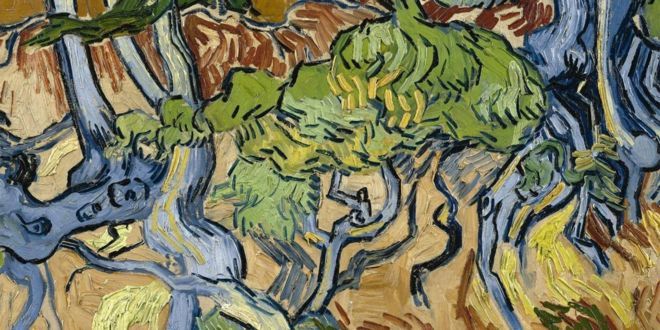
Vincent Van Gogh, Three Roots (1890). Van Gogh Museum, Amsterdam, Holland
In one of his last letters to Theo, Vincent lamented the fact that in the absence of any children of his own, his paintings would be his legacy. But Van Gogh did have a descendant - Expressionism. And along with it, many heirs - Kokoschka, De Kooning, Jackson Pollock ...
Within a few months, Theo, exhausted and ill, had lost his mind and also died. In 1914, his remains were moved to the cemetery in Auvers where he rests beside Vincent, with a matching headstone. From there, the two brothers observe Van Gogh's triumph - "Flowers die, mine will live on."
(Translated from the Spanish by Shauna Devlin)



